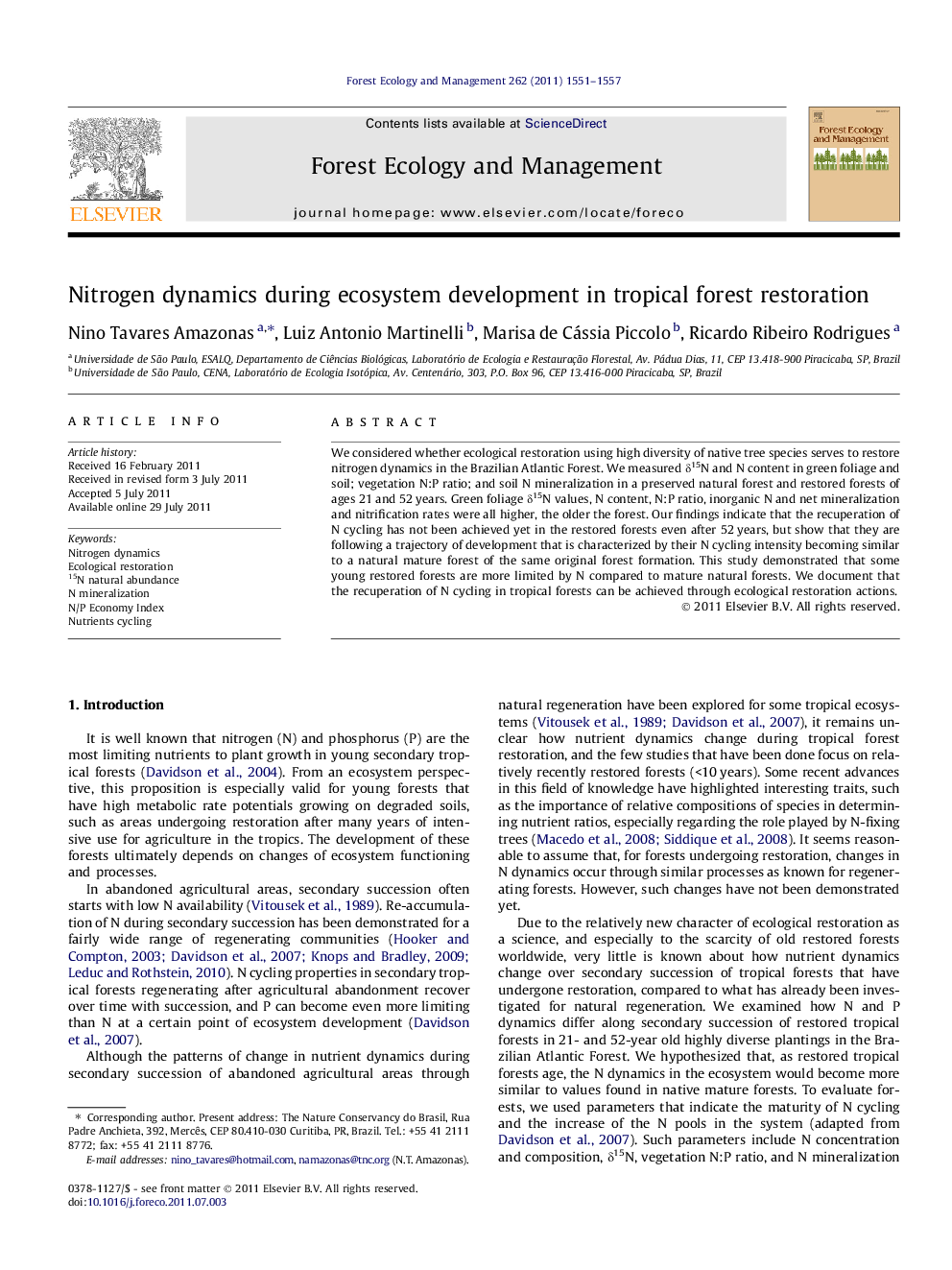| Article ID | Journal | Published Year | Pages | File Type |
|---|---|---|---|---|
| 87684 | Forest Ecology and Management | 2011 | 7 Pages |
We considered whether ecological restoration using high diversity of native tree species serves to restore nitrogen dynamics in the Brazilian Atlantic Forest. We measured δ15N and N content in green foliage and soil; vegetation N:P ratio; and soil N mineralization in a preserved natural forest and restored forests of ages 21 and 52 years. Green foliage δ15N values, N content, N:P ratio, inorganic N and net mineralization and nitrification rates were all higher, the older the forest. Our findings indicate that the recuperation of N cycling has not been achieved yet in the restored forests even after 52 years, but show that they are following a trajectory of development that is characterized by their N cycling intensity becoming similar to a natural mature forest of the same original forest formation. This study demonstrated that some young restored forests are more limited by N compared to mature natural forests. We document that the recuperation of N cycling in tropical forests can be achieved through ecological restoration actions.
► We evaluated changes in nitrogen dynamics in tropical forest restoration. ► N dynamics change as forests develop, becoming similar to reference ecosystems. ► There is a shift from N to P economy during secondary succession. ► We document that N dynamics can be recovered by ecological restoration.
